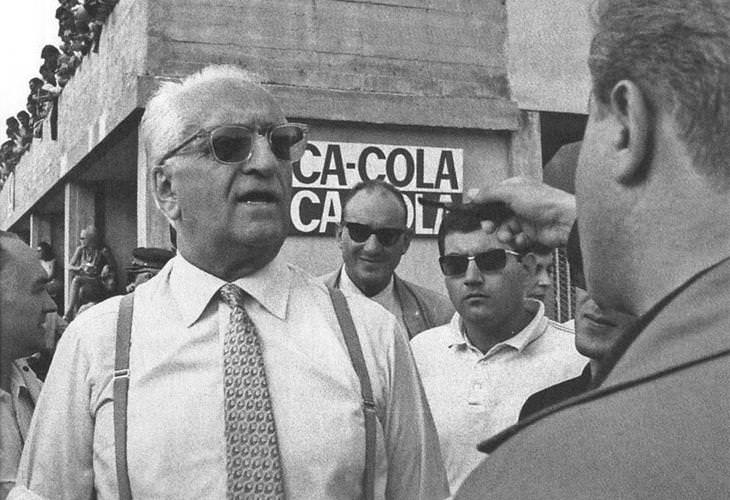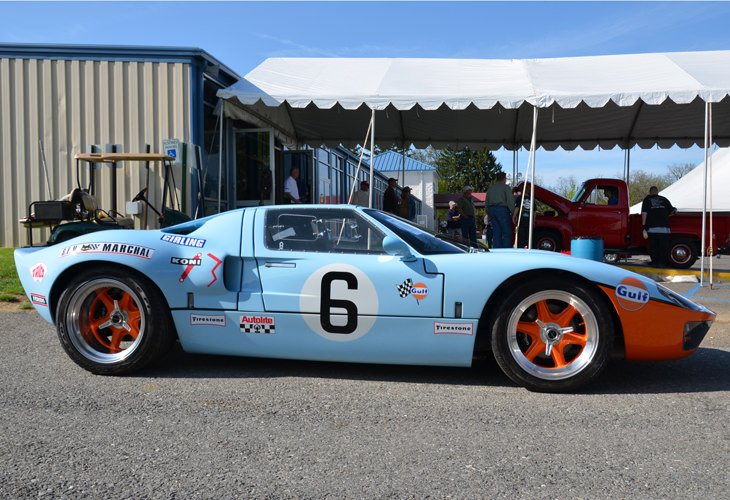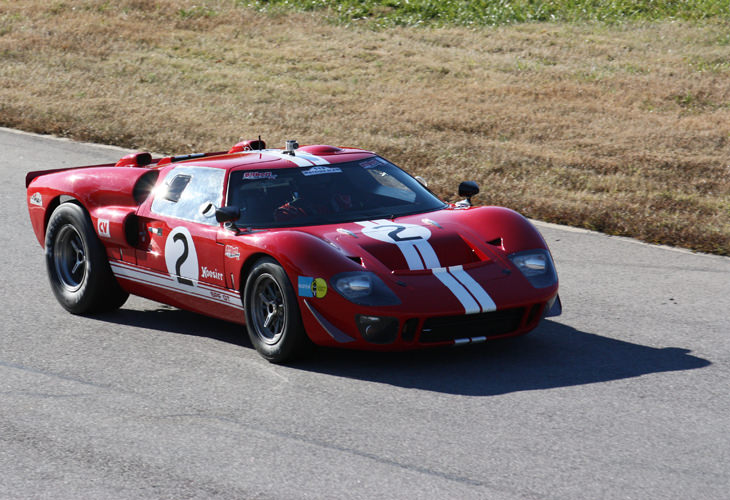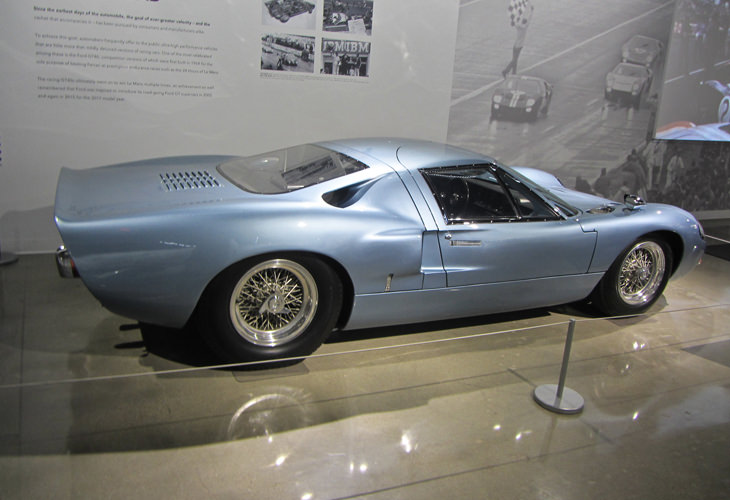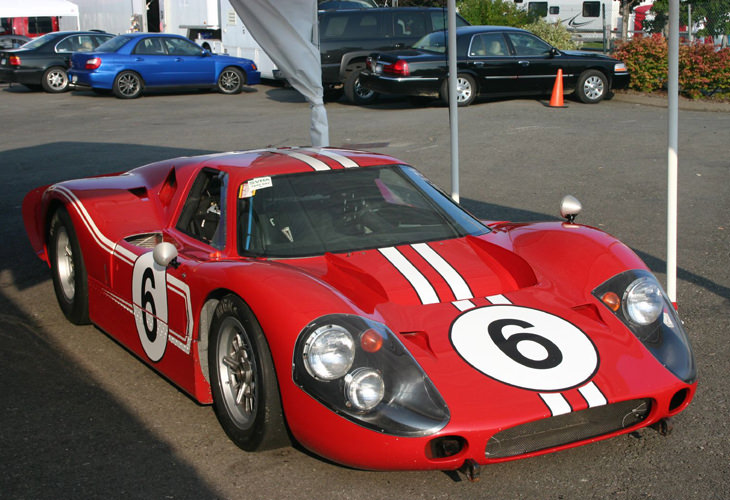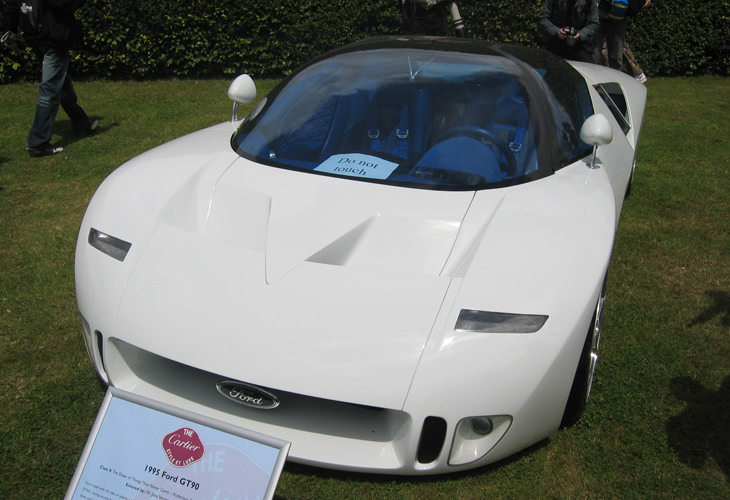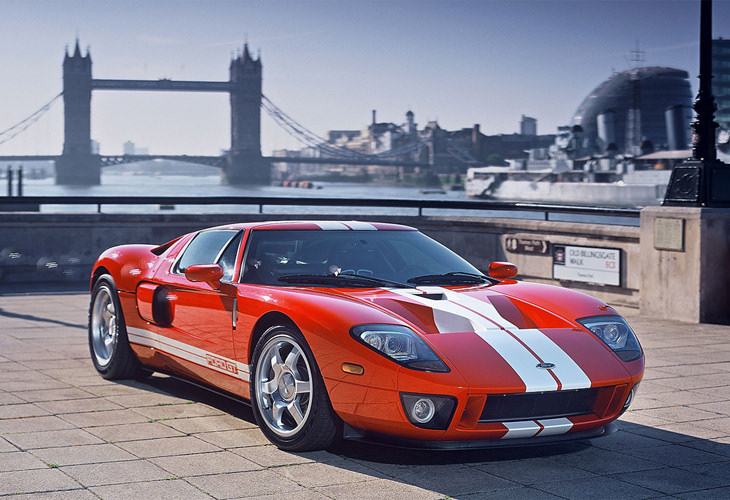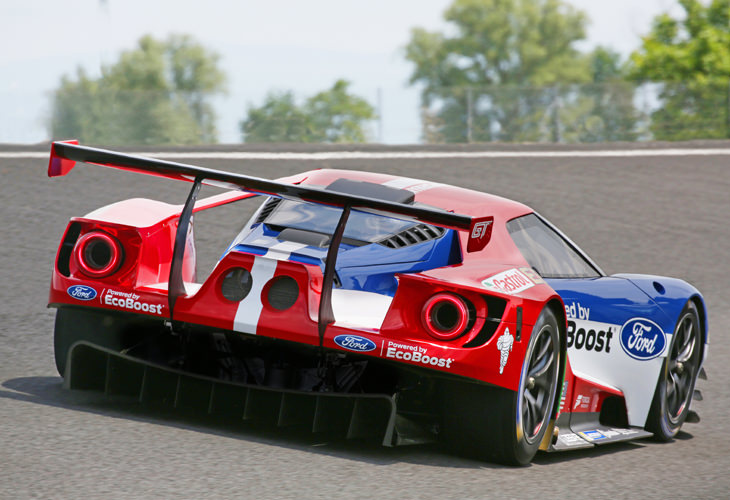The boss of the Ford Motor Company, Henry Ford II, had wanted his company to be represented at the Le Mans 24 Hours race since the early 1960s, but Ford had no experience and even less know-how about taking victory at this most grueling of races.
In 1963, he got word that Enzo Ferrari, the founder of Ferrari, was struggling financially and might be willing to sell his company to Ford. In spite of millions of dollars being spent by Ford in order to conduct a full audit of Ferrari and its assets, the deal never happened.
As the story goes, Ford sent a team of his finest executives to meet Mr. Ferrari at his headquarters in Maranello, Italy. During the meeting, he sat across the table from the Ford execs, accompanied only by the town lawyer.
Enzo Ferrari pictured at Monza in 1967.
While the two were mulling over the final contract offer from Ford, Mr. Ferrari took out his famous purple-inked fountain pen, and marked a clause on the contract that enraged him – Ford wanted to take full control of his racing operation, and this did not fly with him. Leaving the Ford men aghast, Mr. Ferrari and the lawyer simply stood up, left the room and went for lunch.
When Henry Ford II got word of this back in the United States, he was livid. He ordered a crack team of his finest engineers to build him a car that would smash Ferrari at Le Mans. Barely a year after the call from the boss went out, the Mark I version of the Ford GT40 was entered into its first-ever race – the 1000kms of the Nurburgring in May 1964.
The first two years of competition didn’t go very well, with the GT40s failing to make it to the race’s finish. Nevertheless, the experienced gained by entering the 24 Hours of Le Mans and other endurance races served the team well going forward into 1966. In fact, GT40s in Mark II, Mark IV and Mark I guises won this most famous of races four times on the trot between 1966 and 1969, really and truly telling Ferrari where to get off. This is the evolution of the Ford GT40:
Mark I
The Mark I was the original Ford GT40, with early prototypes being powered by 4.2-liter V8 engines. The production models had 4.7-liter V8s. A single roadster version of the Mark I was also built, but customs officials ordered it to be destroyed after its last competitive outing. The Mark I version of the GT40 was actually the version that won the latter two of the car’s four 24 Hours of Le Mans victories. The cars were modified to conform to regulations, which stated that you could run a car with a 5.0-liter engine if more than 50 examples of the car you intended to race had been built.
Mark II
It goes without saying that the Mark I GT40 had its fair share of issues, so the Mark II was developed for the 1966 season. It has numerous differences to the Mark I, but perhaps most notably, the car had a much larger 7.0-liter engine. Other modifications were made to the car’s chassis by Shelby American so that it could accommodate the extra weight of the larger engine. The car got upgraded to a “B” spec version ahead of the 1967 racing season.
Mark III
The Mark III GT40s are all 1967 model year cars, and only seven of them were ever built. These cars went to private customers, and are road-cars only. Differing from the race cars in Mark I, II and IV guises, the Mark III had four headlamps, a detuned 4.7-liter V8, softer shock absorbers, traditional wire wheels and elongated bodywork in order to accommodate a storage compartment within the car’s cabin.
J-car
The Ford Advanced Vehicles operation in the UK, which had previously been responsible for building GT40s, was sold to John Wyer, so the rest of the car’s development subsequently took place in the United States. The so-called J-cars featured the same 7.0-liter engine as the Mark II cars, however they were almost entirely different to the predecessors, with the biggest innovation being the use of honeycomb aluminum panels as opposed to steel. A fatal testing accident with a J-car prompted another redesign of the car’s bodywork, morphing into its final iteration, the Mark IV.
Mark IV
The most radical and American variant of the GT40 only ever competed in two races before it was outlawed due to changing regulations on engine displacement, winning both. One of them was the 1967 24 Hours of Le Mans. Six Mark IVs were constructed by Kar Kraft in the US in total, and one of the cars managed an eye-watering 212 mph on the longest straight of the Le Mans circuit that year.
GT90 Concept
At the 1995 Detroit Auto Show, Ford took the covers off a stunning concept car named the Ford GT90. It was designed to be a world-beating supercar, and also introduced Ford’s New Edge design language to the world for the first time. It was powered by a quad-turbocharged V12 engine reputed to produce 720 bhp. Its quoted top speed was 253 mph. The car’s exhaust gases were so hot that the outlet featured ceramic tiles similar to those used on the Space Shuttle to stop the bodywork from melting.
GT (first generation)
Some 50 years after the GT40 went racing at Le Mans, Ford put the GT into production. The supercar paid homage through its styling to the racer of old, but shared nothing else with the original cars. It was powered by a 5.4-liter supercharged V8, could hit 60 mph in 3.9 seconds, and had a top speed of 205 mph. Famous motoring journalist, Jeremy Clarkson, owned one of these cars for a time. Just over 4,000 first-generation GTs were produced during the 2005 and 2006 model years.
GT (second generation)
The beautiful second-generation Ford GT broke cover in 2015, powered by a 3.5-liter, twin-turbocharged EcoBoost V6 engine. Plenty of high-tech trickery can be found in this car, from active aerodynamics, a carbon fiber monocoque chassis and so-called Gorilla Glass, for increased strength in combination with weight-saving properties. Production of the car began in December 2016, and Ford said that it will be building 250 units per year until 2020.
Back to winning ways
A racing version of the second-generation GT, officially backed by Ford, won the GTE-Pro class at the 2016 24 Hours of Le Mans, almost 50 years to the day since the GT40 Mark I annihilated Ferrari by finishing first, second and third at the 1966 race.

